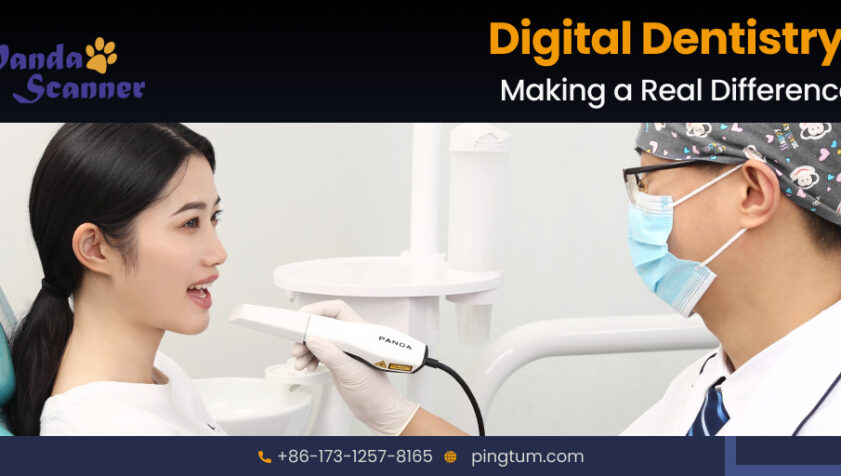Almost every area of dental care is currently being transformed by digital dentistry. From the minute you walk into your dentist’s office to the way he/she diagnoses your illness or condition and monitors your recovery, digital dentistry is largely at play. In fact, the use of products related to digital dentistry have risen considerably accruing a host of benefits for the patients. The digital tools save time and are extremely effective than the traditional approaches in current dental treatments.

Top Digital Tools Used Today
Take a look at these tools that are fast transforming the world of dentistry.
1. Intraoral Cameras
These are tiny cameras that are used to take real-time pictures of the interior of your mouth. Dental practitioners may utilize the acquired images from the cameras to diagnose any dental problems right away. They can also inform you of what they observe, which can help you maintain better dental hygiene in the future.
2. Intraoral Scanning & CAD (Computer-Aided Design) / CAM (Computer-aided manufacturing)
Dental professionals increasingly use intraoral scans or computer-generated mouth tissue replicas using lasers or other optical scanning technologies. This helps to gather impression data much more quickly than what could have been achieved using conventional techniques. By eliminating the need for dirty impression materials like traditional plaster models, CAD/CAM technology, such as the Panda scanner manufactured by Pingtum, can offer comfort and hygiene to patients.
3. Digital Radiography
Although X-rays have been used for a long time in dental clinics, the conventional technique utilizing films required a time-consuming and expensive process. Moreover, the resulting printouts required excessive storage space. Digital radiography is a significantly quicker option since the scans may be viewed right away on a computer screen and saved for later use either on the computer or in the cloud. Sharing images with experts is also made simple. The process moves along much more quickly. The American Dental Association also claims that when comparing digital radiography to conventional X-rays, the danger of radiation exposure is significantly lower.
4. Tools for Scanning Cancer
Fluorescence imaging is a tool that dental practitioners may use to spot abnormalities like cancer that might not be immediately apparent otherwise. The therapy may be administered quickly and affordably when such disorders are detected early with the aid of contemporary technology. This gives the patient a better prognosis and a significantly shorter recovery period. This technique can identify lesions and other potentially harmful anomalies, according to the recent findings in digital dentistry.
5. Implant Surgery With Digital Guidance
Since this tool is relatively new, it is not a very well-known among dental practitioners. However, intraoral scanning aids dentists and dental surgeons in determining the most accurate and successful way to put implants in the unique jawbone features provided by each patient. This reduces the chances of mistakes while calculating the size of a dental implant. Besides this, the patient does not have to undergo the same process time and again owing to the precision of the process. So, give your patients a treatment session to look forward to without any pain.
Conclusion
Due to breakthroughs in the field of digital dentistry, visits to dental clinics and hospitals have improved. The process of check-ups and providing an effective diagnosis have also become a lot faster, safer, and more dependable. Dentists and dental associates that make perfect use of the possibilities afforded by scientifically proven, tried, and tested digital oral technologies like a Panda scanner, may deliver the best dental treatment with the greatest degree of comfort.






